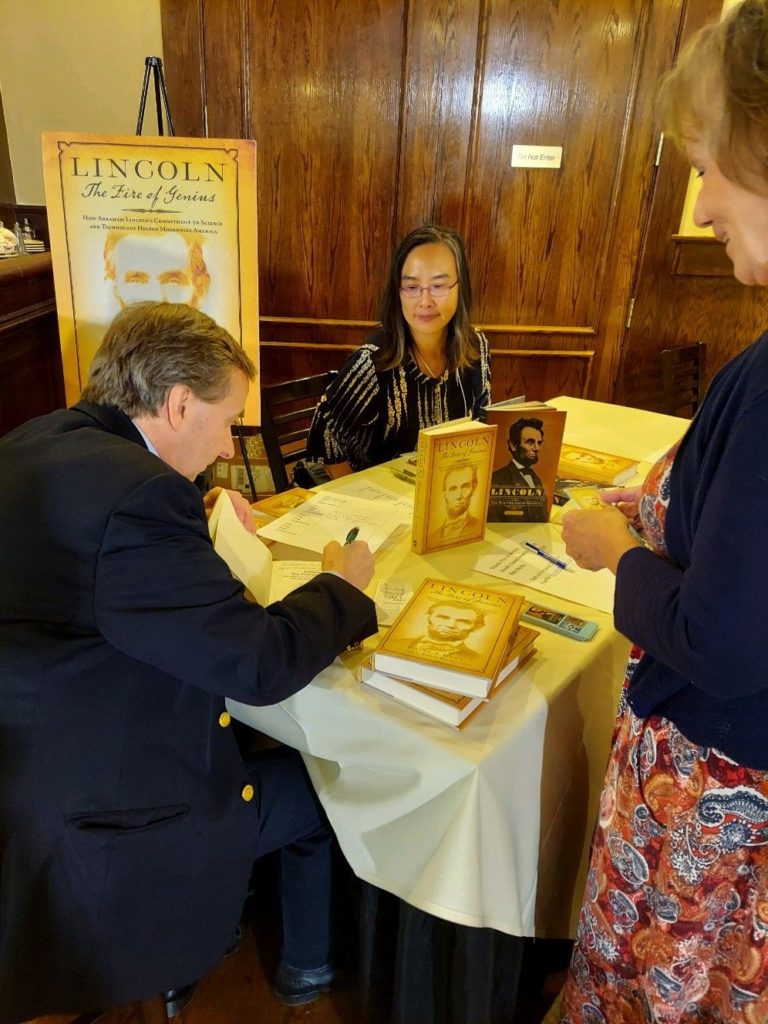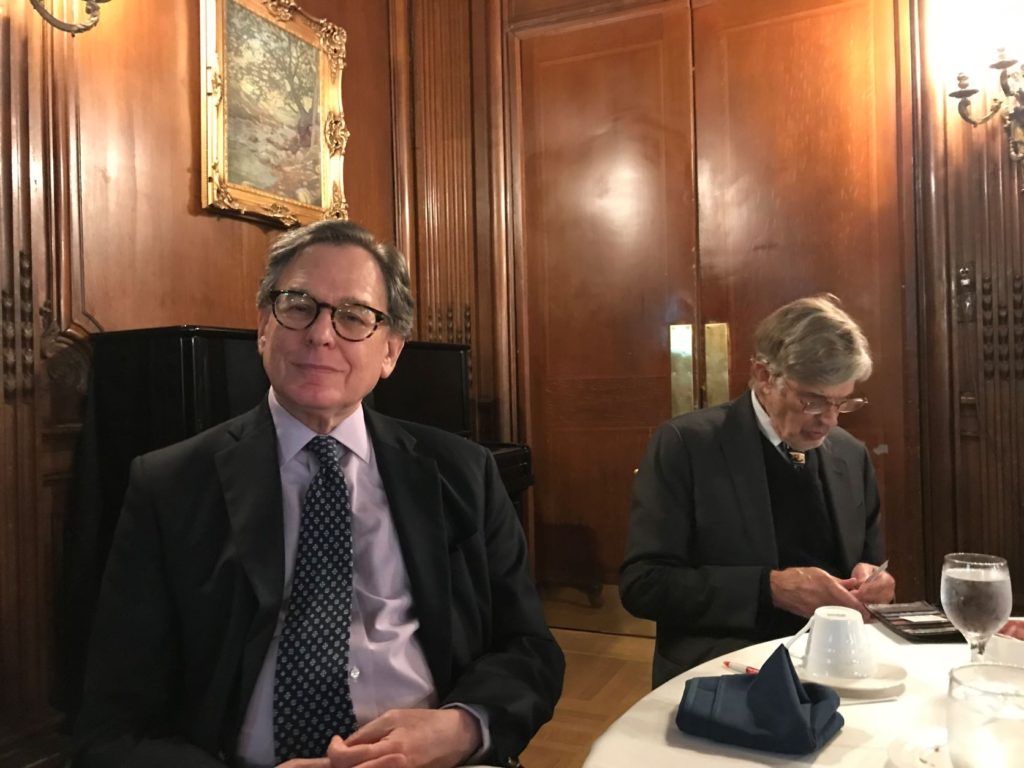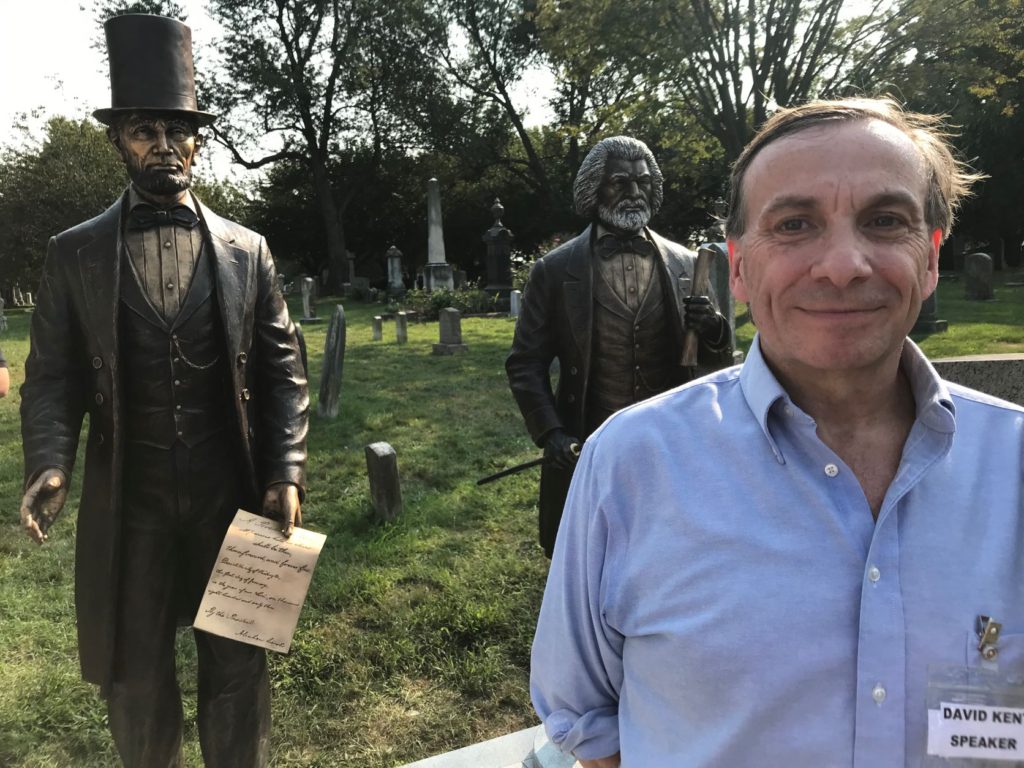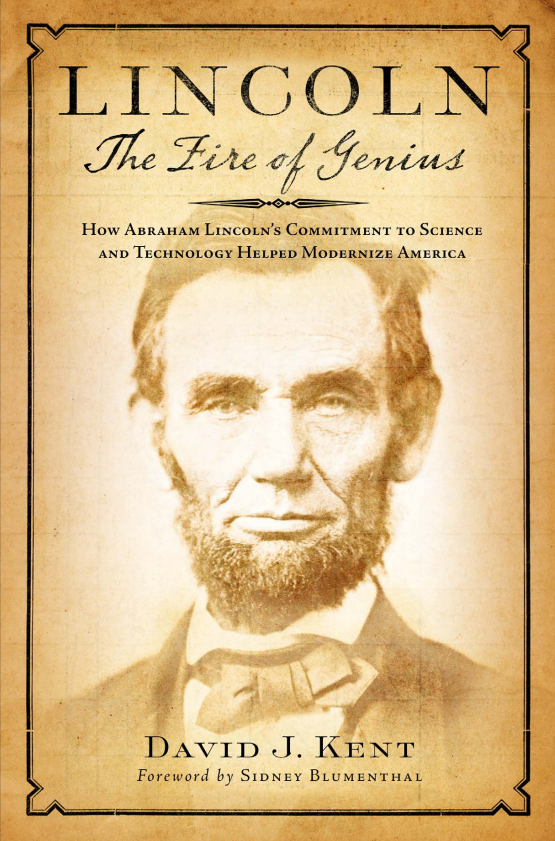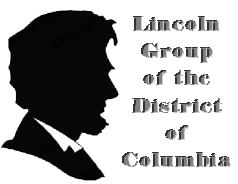 I was interviewed in the summer 2022 issue of The Lincolnian, the newsletter of the Lincoln Group of DC. The Lincolnian is sent to all Lincoln Group members quarterly (if you’re not a member, you can become one here). Below is Part 1 of the interview entitled “Up Close and Personal with Lincoln Group President David J. Kent.” The focus was on my new book, Lincoln: The Fire of Genius. The interviewer was Wendy Swanson, editor of The Lincolnian.
I was interviewed in the summer 2022 issue of The Lincolnian, the newsletter of the Lincoln Group of DC. The Lincolnian is sent to all Lincoln Group members quarterly (if you’re not a member, you can become one here). Below is Part 1 of the interview entitled “Up Close and Personal with Lincoln Group President David J. Kent.” The focus was on my new book, Lincoln: The Fire of Genius. The interviewer was Wendy Swanson, editor of The Lincolnian.
Your new book – Lincoln: The Fire of Genius – is due out soon and we will be celebrating its launch party at our September meeting. Tell us a bit about the publication. What inspired you to write the book? What are the major themes/topics? Who is the targeted audience? Does one need a background in science to gain optimal benefit from reading the book?
Over my long career as a scientist, I noticed the scientific way Abraham Lincoln approached problem solving. As I dug deeper, I could see the thread of science and technology running through his life. The book extracts this thread and we see how fundamental it became to his overarching goal of “bettering his condition” as well as giving everyone – not just the wealthy elite – an equal chance in the race of life.
I look at this theme in each major aspect of his life – growing up on the farm, expanding interests as he plied the rivers and picked up technical trades and an education, how he became a go-to lawyer for patent and technology cases and his work for the railroads, and then of course in the Civil War. But I also look at his passion for internal improvements, “the science of slavery,” and the deep knowledge behind his science lectures. The book is targeted to those who know the basic story of Lincoln’s life, but don’t realize how much science and technology was woven into it. That said, the writing is breezy, not technical. It’s about Lincoln and his times, not an attempt to impress readers with technical jargon.
What do you aim to accomplish for your audience with this book? Are there lessons to be learned from Lincoln from this work? If so, what are they and how can they be applied in our daily lives?
I want readers to appreciate how science and technology helped drive progress during the 19th century, and how Lincoln’s appreciation for them helped not only to improve his own life but the lives of all Americans. In today’s age where science and scientists are disdained by “Google U.” instant “experts,” it’s important to see how Lincoln and others saw science as a benefit to humanity. When Lincoln didn’t understand something, he studied it until he did. We can all learn from that intellectual ethic.
How long did it take you to complete this work? The topic sounds as if it could be quite technical? What research did you undertake in order to write the book- and how much time/or how long did your research take?
I started toying with the primordial idea over a decade ago while I was working as a scientist in Europe. I refined the idea over several years while sidetracked into writing books on Tesla, Edison, and my Lincoln: The Man Who Saved America book. I immersed myself in the LOC, NARA, the Presidential Library in Springfield, and dozens of smaller libraries pulling on the loose threads of science and technology that wove the tapestry of his life. Visiting the places Lincoln lived and worked gave insights libraries can’t provide. My science background let me draw insights most people would miss.
Did you learn anything new – if so, what most surprised you about what you learned?
I was surprised by how much science Lincoln knew. His command of mathematics is far beyond his professed “cypherin’ to the rule of three.” He was an astronomy buff. He understood more hydrology, ecology, physics, and engineering than most people give him credit for. He thought scientifically in such a way to become a strategic thinker far beyond most of his peers.
What do most folks not know relative to Lincoln and science/technology? What do you think readers will be most surprised to learn? Will they gain a different perspective on Lincoln from reading this book? Explain.
His focus was to bring science and technology to the masses. Thomas Jefferson could possibly be considered a “scientist” in the sense of his day. Lincoln was no scientist by any sense, but his scientific and logical thinking helped him encourage the growing technologies of his time. Jefferson made himself a better clock and a writing table; Lincoln sought to improve the lives of the farming and working classes of Americans. Readers will absolutely come away with a different perspective on Lincoln.
Part 2 has more of the interview. The Lincolnian is the official quarterly newsletter of the Lincoln Group of DC. Lincolnian.org is the group’s website, so check it out. Membership is open to everyone who has an interest in Abraham Lincoln.
P.S. I was also interviewed by The Lincolnian in 2017 when my earlier book was released. You can read more about that book, Lincoln: The Man Who Saved America, in Part 1 and Part 2.
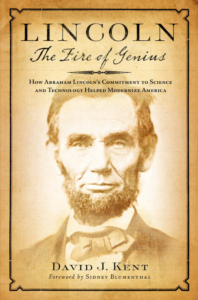
Lincoln: The Fire of Genius: How Abraham Lincoln’s Commitment to Science and Technology Helped Modernize America was released on September 1, 2022.
The book is available for purchase at all bookseller outlets. Limited signed copies are available via this website. The book also listed on Goodreads, the database where I keep track of my reading. Click on the “Want to Read” button to put it on your reading list. Please leave a review if you like the book.
You also follow my author page on Facebook.
David J. Kent is President of the Lincoln Group of DC and the author of Lincoln: The Fire of Genius: How Abraham Lincoln’s Commitment to Science and Technology Helped Modernize America and Lincoln: The Man Who Saved America.
His previous books include Tesla: The Wizard of Electricity and Edison: The Inventor of the Modern World and two specialty e-books: Nikola Tesla: Renewable Energy Ahead of Its Time and Abraham Lincoln and Nikola Tesla: Connected by Fate.



